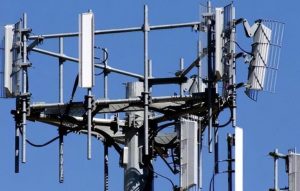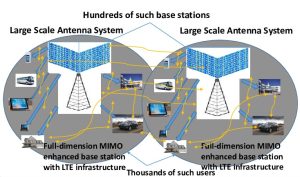AAU、RRU、BBU

AAU (Active Antenna Processing Unit) is a new type of equipment introduced by the 5G network framework, and has certain functional differences from RRU (Remote Radio Unit).
RRU (Radio Frequency Remote Function) appeared in the 3G era.
As early as the 2G era, the base station was also called BTS (Base Transceiver Station). The 2G network structure is mainly composed of terminals, base station subsystems, bearer networks, and core networks. The base station subsystem includes BTS (Base Transceiver Station) and BSC (Base Station Controller).

In the 2G era of base station, its baseband unit part and radio frequency unit part are integrated in a cabinet, and the radio frequency unit port is connected to the antenna through the feeder.

In the 3G era, in addition to the equipment in which the radio frequency unit and the baseband unit are located in a cabinet, a base station with separate baseband unit and radio frequency unit also appeared. This base station is also called a distributed base station, and the baseband part is called BBU. , and the radio unit is called RRU.
At first, the RRU was hung on the wall of the equipment room, the BBU was installed in a standard cabinet, and the feeder (the 7/8 feeder was the main line) was still used between the RRU and the antenna. Continuing to develop, the RRU began to go up the tower, the BBU and the RRU were connected by optical fibers, and the RRU and the antenna were connected by a jumper (1/2 feeder).

After entering 4G, the traditional integrated macro base station has been completely replaced by the BBU+RRU+antenna mode, and some BBUs have been placed in one computer room to form a BBU pool.

In the 5G era, the structure of the base station has undergone new changes, and a new device AAU has appeared.
The reason why AAU appeared in 5G is actually because 5G introduced Massive MIMO technology.
Massive MIMO, massive multiple input multiple output.

MIMO is a multiple-input multiple-output technology. This is actually easier to understand. You can imagine it as a highway. If you let more cars run on the highway, you need more lanes. Obviously, the traffic flow of eight lanes is higher than that of four lanes. much bigger.

The higher the order of MIMO, the more antennas are required, the more antennas, the more feeders, and the more feeder interfaces on the RRU, and the complexity of this process is getting higher and higher. . In addition, the feeder itself has a certain attenuation, which will also affect part of the system performance.
It is also for this reason that in 5G, the RRU and the original passive antenna are integrated into one, forming the latest AAU (active antenna processing unit).

The antenna is integrated, so the volume and weight of the AAU are larger than that of the RRU, the power consumption is also greatly increased, and the price is much more expensive.
AAU also adds some BBU functions.
In the 5G era, not only is the RRU and the antenna integrated into an AAU, but the physical structure of the BBU has also evolved into a CU (centralized unit) and DU (distributed unit) due to the network framework changed by 5G.
Among them, the real-time part of the BBU has become a DU (distribution unit), while the non-real-time function of the BBU has evolved into a CU (centralized unit). In addition, the 5G core network function is sinking to the edge, and the CU will also carry the part core network functions.
Some of the physical layer functions of the BBU are designed into the AAU. Therefore, compared with the RRU, the AAU is not only the function of the multi-integrated antenna part, but also some of the physical layer functions of the BBU.
There will still be RRU in 5G.
There are also some low-frequency parts in 5G, such as the 700Mhz that will be used by radio and television, and this low-frequency part is difficult to support large-scale antenna arrays because the wavelength is too large and the antenna array is too large.
Moreover, there is no need to use expensive AAU for some areas that do not require high system capacity, such as rural areas and mountainous areas.
Therefore, in the entire network structure of 5G, there will still be a combination of BBU+RRU+traditional antennas, and AAU is not the only one in the 5G system.
Moreover, for areas where AAU is not deployed, 2/3/4/5G can also be deployed, which are fully integrated into the same set of BBU+RRU+ antenna base stations, and operators can deploy 5G networks to reduce some costs.



